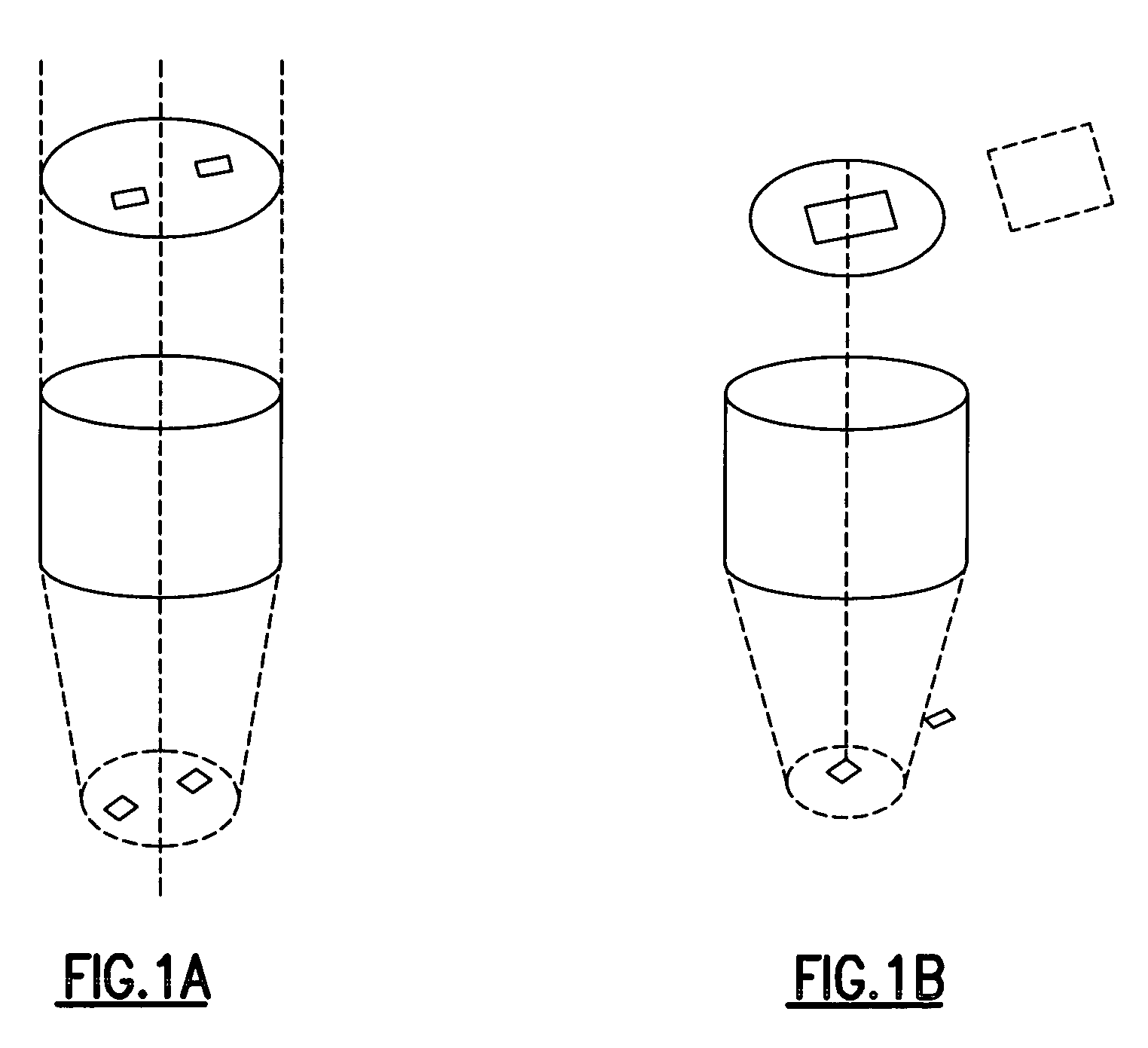Apparatus and methods for the inspection of microvias in printed circuit boards
a printed circuit board and micro-via technology, applied in the field of micro-via inspection apparatus and printed circuit board scanning and imaging, can solve the problems of affecting the image quality of printed circuit boards
- Summary
- Abstract
- Description
- Claims
- Application Information
AI Technical Summary
Problems solved by technology
Method used
Image
Examples
Embodiment Construction
[0030]As will be described in the following, the present invention concerns a system and method providing an increased pixel resolution over the diameter of the microvias while, at the same time, increasing the inspection processing throughput. A system of the present is configurable, for example, as either a linear two dimensional (2D) imaging Charge Coupled Device (CCD) camera or as two dimensional (2D) CCD array camera to image microvias or blind hole vias in either a continuous scan process or in a “step and repeat” process. The system and method of the present invention may also be used to image and inspect conductor traces or through hole via interconnects within multi-layer printed circuit board assemblies (PCBs) as are commonly used within the high density printed circuit board industry.
[0031]The following descriptions will focus, however, on the inspection of microvias and the detection of defects, such as partially drilled microvias, as presenting the most difficult inspec...
PUM
| Property | Measurement | Unit |
|---|---|---|
| diameter | aaaaa | aaaaa |
| microvia size | aaaaa | aaaaa |
| diameter | aaaaa | aaaaa |
Abstract
Description
Claims
Application Information
 Login to View More
Login to View More - R&D
- Intellectual Property
- Life Sciences
- Materials
- Tech Scout
- Unparalleled Data Quality
- Higher Quality Content
- 60% Fewer Hallucinations
Browse by: Latest US Patents, China's latest patents, Technical Efficacy Thesaurus, Application Domain, Technology Topic, Popular Technical Reports.
© 2025 PatSnap. All rights reserved.Legal|Privacy policy|Modern Slavery Act Transparency Statement|Sitemap|About US| Contact US: help@patsnap.com



